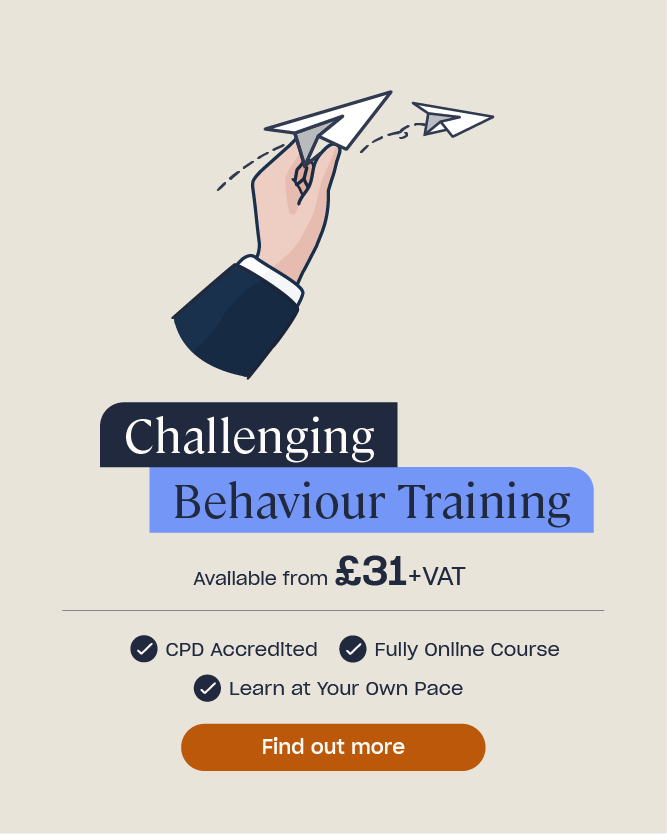Understanding the Importance of Motivation in Education
Motivated students are much more likely to achieve their potential and find success. Motivation is an essential ingredient in effective teaching and learning. It not only yields more positive behaviour in students, but it also contributes to a greater sense of wellbeing. Understanding how to motivate children and young people in education is crucial, if we are to provide them with the best possible start in life.
In this article, we will address the importance of motivation in education, the different types of motivation in schools – including intrinsic and extrinsic motivation, and how to motivate children and young people in schools.

What is Motivation in Education?
Motivation is defined as our enthusiasm for doing something. It is the ‘why’ behind every action. Motivation is the reason – or reasons – for acting or behaving in a particular way. It helps us to set a goal and reach it. The term ‘motivation’ is derived from the Latin verb ‘movere’, so quite literally, it’s what keeps us moving.
In education, motivation helps children and young people to focus their attention on a key goal or outcome. In doing so, they are unfazed by possible distractions, and are therefore able to maintain their attention during longer periods of time. Students who are motivated display goal-orientated behaviours. They take initiative, show resilience, harness their curiosity, and care for and respect their work. They are equipped to orchestrate their own learning journey.
Discovering ways to increase motivation in the classroom is vital, as it enables us to:
- Change behaviour.
- Develop competencies.
- Spark curiosity.
- Set goals.
- Develop interests.
- Plan for the future.
- Blossom talents.
- Increase engagement.
Getting students engaged in a lesson or unit of work is something a talented teacher can achieve, but motivating them to become better learners, who strive to achieve their true potential, can be incredibly challenging, especially as our experience of motivation is often unconscious. Unmotivated students are often disengaged or disaffected, which can lead to challenging behaviour.
Do you face challenging behaviour?
Our Challenging Behaviour Training Course is recommended for education professionals who want to have a better understanding of how to respond to children and young people’s behaviour. It emphasises proactive strategies to help prevent behaviour incidents, as well as going through research-based reactive strategies. Visit our course library to have a look at the range of training courses we offer.

Why is Motivation in Children Important?
Motivation is the force that keeps children going, even when they face barriers or challenges. It charges them with the energy required to fulfil their potential. A child who is motivated is committed, energetic, and innovative: they see the value in what they are learning, and are determined to achieve their goals.
There are innumerable benefits of motivation in learning. These include:
- Increased persistence.
- Increased wellbeing.
- Improved performance and outcomes.
- Enhanced cognitive processing.
- Increased effort in lessons.
- Higher levels of attendance.
- Increased creativity and innovation.
How to Motivate Children
It can be challenging to motivate children, but we have collated seven tried-and-tested strategies for you to try in the classroom.
Have a Growth Mindset
Carol Dweck’s studies on the benefits of adopting a growth mindset are well documented. Dweck sees education as a constant learning curve, rather than a linear process. Students with a growth mindset continually develop and refine their thinking. They are not crushed by assessment scores; instead, they turn challenges into experiences, and use them as fuel for continual growth and development.
In contrast, students with a fixed mindset are fixated in the present. They can’t accept failure, they require instant recognition, and often crumble in the face of adversity.
In order to develop a growth mindset in children, praise them for the process, rather than their intelligence or talents, as this can make them vulnerable. Acknowledge their effort, focus, or hard work, as these are the qualities which will make students resilient. This is especially important given that there is evidence that implicitly finds short-term effort as an important determinant of student performance in high-stakes exams (Metcalfe et al, 2011).
When educators create a growth mindset environment, equality can happen.
Carol Dweck
Dweck states that the growth mindset is particularly important for struggling students. ‘When educators create a growth mindset environment, equality can happen.’ When students engage in challenging tasks, the processes and connections in the brain begin to change, which makes them more equipped to tackle future learning. Regardless of students’ backgrounds, surrounding them with acceptance, possibility, and wonder provides them with a gateway to success.

Adopt a Holistic Approach
A child’s past experience in a subject is a contributing factor in how much they will invest in their lessons in the future. If they had a poor relationship with their KS3 maths teacher, and only ever received negative feedback, it’s unlikely that they’ll be motivated as they begin KS4 maths. Schools have a responsibility to be consistent in their approach, so students of all ages and abilities build trust in their environment.
Schools should overcommunicate their core beliefs. Everyone in the school community should understand and contribute to the school’s high expectations and shared values, and acknowledge that they all have a role to play in the school’s success. Adrian Bethune, author of the award-winning book, Wellbeing in the Primary Classroom, speaks of the importance of becoming a tribe, where each and every child feels a deep, innate sense of belonging. They feel rooted, welcomed, and valued.
By amplifying their shared beliefs, the effect is cumulative. Students become driven and motivated by their school community.
Improve Your Universal Provision
Effective universal provision is vital if we are to nurture student motivation. Universal provision includes a child’s learning environment, as well as the high-quality teaching available to them.
Every school should have a strong behaviour policy, which promotes motivation and wellbeing. This will ensure students are emotionally prepared to learn. The school should prioritise social skills, so that all students can become caring, loving, empathetic, and supportive of one another, as healthy peer-to-peer relationships can affect student motivation.
The routines across school should also be consistent, so that students know what is expected of them – when they enter classrooms or engage in classroom discussion, for example. These routines alleviate uncertainty, which is a key contributor to anxiety.

Praise
All learning is effortful, so when students display willing and success, they deserve to be acknowledged. When children feel proficient in something, they develop a greater sense of agency, and are therefore more curious about the next aspect of their learning. We should secure success early and often, so that students feel empowered and confident when navigating future learning. Recognition also makes us feel good. It helps to boost our self-esteem and our sense of self-worth.
Prioritise Accessibility
To create a truly inclusive environment, aim to create a ‘no one is left behind’ ethos. Schools should aim to foster a culture of acceptance and equality, where neurodiversity is celebrated and respected.
Focus on individual strengths, and provide plentiful opportunities for students to excel in these areas. For example, a student with dyslexia may be exceptional at creative writing, but find spelling a challenge. Similarly, a student with ADHD may excel in art but have limited opportunities to nurture this talent. Empower them with confidence in their abilities, as success is individual – the more you achieve, the more you’ll want to continue.
Professional development and CPD opportunities for staff can ensure that teachers and TAs understand how best to support students with SEND.
Empower Students with Knowledge
Make sure that students understand how they can do better – that they know where they went wrong, and how to improve. Increasing metacognitive talk in classrooms can help to develop student confidence, as it gives them a stronger awareness of the learning process. You can find out more about metacognition in the classroom here.
Make Learning Relatable
We know that motivation is localised and malleable. Our motivation can fluctuate and change, depending on context and how much we perceive the opportunity to be of value.
A NEET research project, involving young people aged 16-24, aimed to assess the aspirations, motivation, and behaviours of young people and adults not in education, employment, or training. They found that many participants had ‘poor previous experiences of education’. Those who did show interest in applying for courses in the future frequently cited motivations to learn associated with future career aspirations, with many preferring practical styles of learning. Therefore, in order to keep children and young people motivated to achieve success in the future, they need to feel the value in what they are learning today: we must aim to make their studies purposeful, engaging, and relevant to their futures.

What are the Different Types of Motivation in Education?
Motivation in the early years is especially crucial, as this is when we have the opportunity to mould children into confident, resilient, lifelong learners. From a young age, children learn about the world around them through curiosity. Many approaches to the early years, such as The Curiosity Approach, harness children’s innate interest in their environment. However, as children get older, this eagerness to discover and learn is often not as strong. Instead, many look for external rewards as a mechanism to help them achieve their aims. These two drivers of behaviour are intrinsic and extrinsic motivation.
Intrinsic Motivation
Intrinsic motivation is a self-summoned willingness to learn. Those who are intrinsically motivated don’t require sanctions or rewards to help steer their efforts. Very young children are often naturally intrinsically motivated, and are led by their innate curiosity. This form of motivation often encourages more efficient and successful learners in the classroom. There are many studies which suggest that children who are intrinsically motivated are better at learning. In fact, intrinsic motivation is often shown as one of the most powerful predictors of academic achievement.
Many students experience a decline in intrinsic motivation during adolescence. Keeping this thirst for learning alive in children can be a challenging task. It’s not only the learning environments and universal provision available within schools that help to inspire intrinsic motivation – parenting, biology, age, gender, wellbeing, and peer relationships can also affect to what extent students feel engaged in their learning.

Extrinsic Motivation
Education providers often cultivate intrinsic motivation through extrinsic means. Vansteenkiste et al. (2006) define extrinsic motivation as the desire of people to participate in activities in order to gain something different from the task itself. Examples of extrinsic motivation include medals for the winners of a race, chocolate for good attendance, extra break time for positive behaviour, vouchers for reading for pleasure, and completing homework in order to avoid a detention.
It is possible to boost intrinsic motivation through extrinsic means. This may be particularly effective for students with particular needs, or disaffected learners, whose background, relationships, or previous experience of education has resulted in a lack of faith in the system. Cameron (2001) argues that external motives can promote children’s willingness to learn, and that they are not harmful to students’ intrinsic motivation.
However, once this process of extrinsically motivating through rewards becomes habitual, it can become challenging to disassociate success with praise and reward, as the individual’s attitude becomes controlled by the stimulus alone. Some studies suggest that if there is no genuine desire that steers individuals to engage in the activity, then deep learning must be limited.
Professor Frédéric Guay, an expert in motivation at Laval University in Québec, states: “Rather than focusing on rewards, focus on the quality of relationship with the students. Students who find learning important, even if they don’t enjoy it, will bring about the same kind of positive outcomes as you see with those with high intrinsic motivation.” Guay suggests that educators should encourage children to express their emotions, and share their experiences towards learning. Their responses can be used to help teachers redefine their practice, and therefore improve the learning experience for all pupils.

How Does Motivation Impact Behaviour and Performance?
Motivation pushes children to work hard and aim high in everything they set their minds to. When students are surrounded by a culture of warmth, diversity, and high expectations, they are much more likely to display positive behaviours. Children who are motivated are also more likely to find pleasure in satisfying their academic curiosity. Intrinsic motivation links strongly to performance merely for the enjoyment of engaging in activities. This pleasure is often the reason that pupils take part in academic tasks.
How Motivation Affects Academic Performance
We know that students who are intrinsically motivated are much more likely to be successful in their education, but can extrinsic motivation help to improve performance?
In a research project run by the Education Endowment Foundation, students in KS4 were offered an incentive for achieving their set GCSE targets. Participants were extrinsically motivated through either a financial reward, or access to a paid trip. Where students were offered a monetary incentive, there was a significant improvement in classwork effort seen within English, maths, and science. However, there was no evidence of a significant positive impact on attainment. Therefore, extrinsic motivation can prove to be successful in improving engagement, but as this study proves, there is limited evidence to suggest that it boosts attainment, or would help to maintain effort over a long period of time.
Enjoyment in lessons has been found to be strongly linked to high levels of student motivation. Studies assessing motivation in physical education found that enjoyment is a valuable predictor of two situations – a child’s willingness to begin a physical activity, and how long they will maintain it once it’s begun (Navarro-Patón, 2018). When students have fun and find success, they experience improved self-worth and self-belief, which are key drivers in developing a self-summoned desire to achieve.
Similarly, when assessing pedagogy in physical education, a Public Health study found that class settings, a sense of connectedness, and social dynamics need to be considered if educators are to enhance pupils’ motivation, self-determination, and engagement (Lamb and Kirk, 2021). It also found that developing pedagogies which support young people’s mental health and wellbeing and improving relationships with teachers were key motivating factors in pupils’ engagement in the subject.

Motivation drives learning. Without it, completing even the simplest of actions can prove challenging, or even impossible. Therefore, it’s crucial to understand how to accommodate and facilitate motivation in the classroom. There is a place for both intrinsic and extrinsic motivation in education: both forms can complement one another. It may be that methods to extrinsically motivate children are initially required in order to build a culture of achievement and success. Once schools have created an environment conducive to learning, they can gradually begin to replace external motivations in order to further inspire their students’ intrinsic desire to learn.
Further Resources:
- How to Encourage Children to Express their Feelings
- How to Support Individuals with Learning Disabilities
- Educational Bias: How to Avoid Bias in the Classroom
- What is Adaptive Teaching?
- How to Use Assessment for Learning in Schools
- How to Create a Positive Learning Environment
- Challenging Behaviour Course











